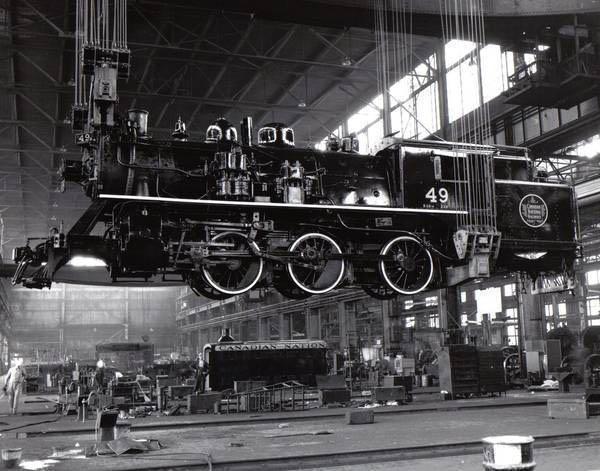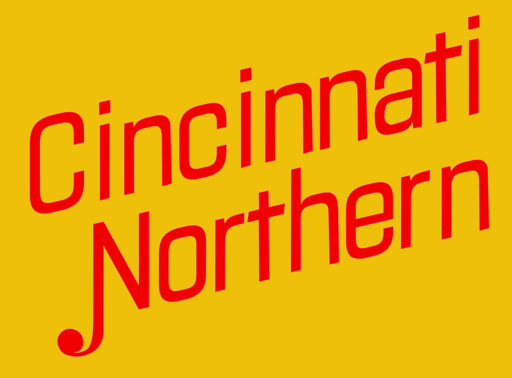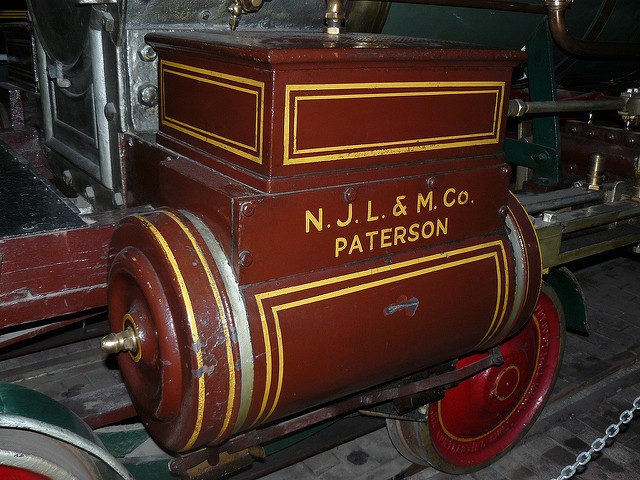Steam Locos – Americans & Other Small Steamers…and Misc.

My current project involves building a model of a Cincinnati Northern 4-4-0 as it would have been around 1900. Here’s a pic of CN #110. It was built by Brooks in 1883. It transitioned through two railroads before getting to the CN: the M&O RR (Michigan & Ohio), and the CJ&M RR (Cincinnati, Jackson & Mackinaw). I spent some time figuring out that while Baldwin, Rhode Island, Rogers, Schenectady, and what seems like most early loco builders sloped the roof of the cab on the early (19th century) Americans, Brooks arched the cab roof.
Compare CN #110’s cab roof with the Jupiter’s cab roof (famous for being at the golden spike ceremony for the transcontinental RR) – The Jupiter was built by Schenectady in 1868. Also compare the domes, stacks, and headlights of these two locos. Both domes of CN #110 were upgraded. The headlight was replaced. And, the stack was changed from a diamond stack to a straight capped stack.
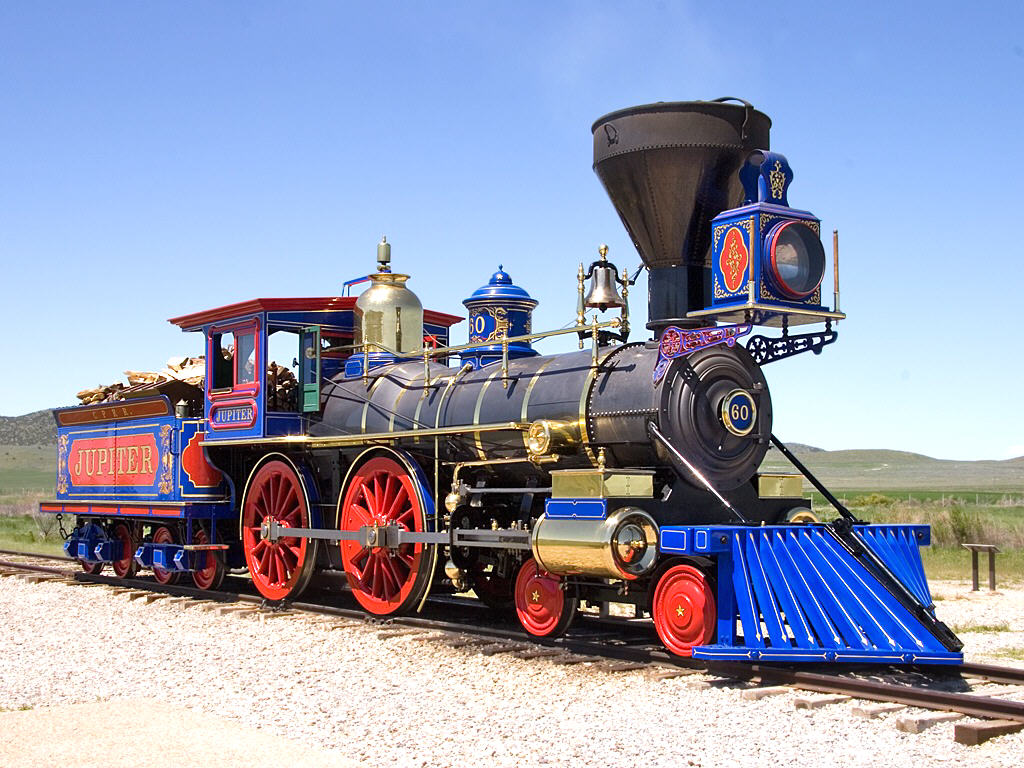
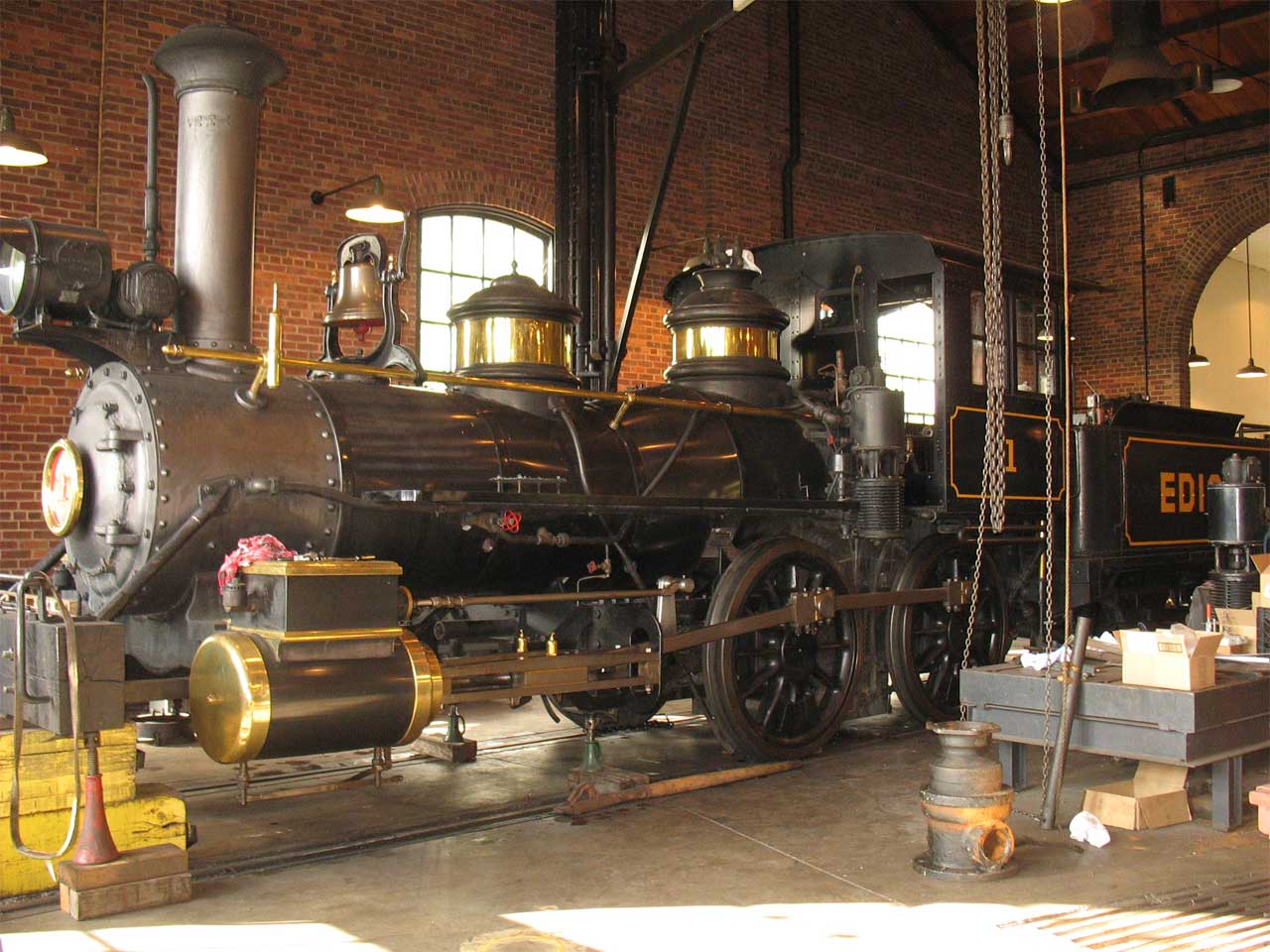
This is a pic from inside the roundhouse at the Henry Ford Museum complex. The capped straight stack of Edison #1 matches the revised stack of CN #110. What’s additionally nice about this photo is a clear vision of what can be seen of the Stephenson valve gear. The models don’t typically give you much since most of the valve gear is under the boiler between the wheels and the side rods. What has disappointed me is that most of the models don’t give you the valve rod out of the valve box (above the cylinder). This is the one clearly visible part of Stephenson valve gear – but the model builders don’t typically provide it. This pic clearly shows the valve rod and attachment back to the valve gear. Also note, this loco was built by Manchester Locomotive Works – and it has an arched cab roof like the Brooks!
On “The William Crook”, If I’m seeing the builder clearly, it was the N, J, L & M Company. (New Jersey Locomotive and Machine Company, in Paterson, NJ – I’ve never run into them before!) This is another great photo for studying different features of 4-4-0’s. The “William Crooks” is shown on display In St. Paul Union Depot. The locomotive was on display at the Depot from 1954 to 1975 when it was moved to the Lake Superior Railroad Museum in Duluth where it is today.
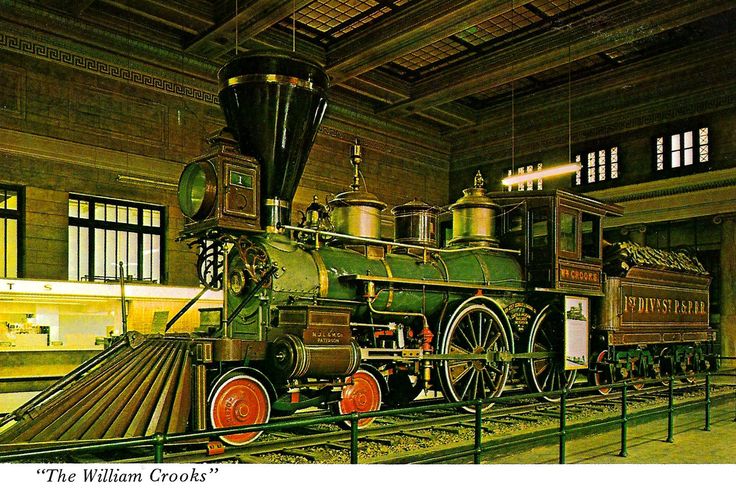
This is the official builders plate, mounted between the drivers. The locomotive was originally a wood-burner with a tender that held just two cords of wood. Often, the tender’s wood was used before the train could reach a wood pile, forcing the crew to make use of the wooden right-of-way fences to keep the train moving. Later the locomotive was converted into a coal-burner. I have to look up the story of Smith and Jackson – the designated builders of this locomotive.
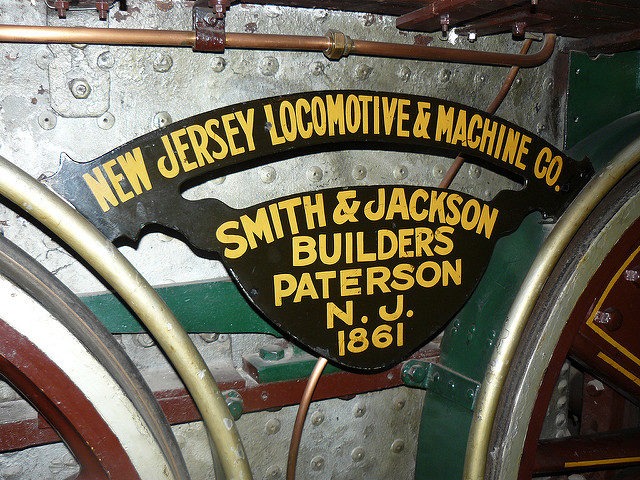
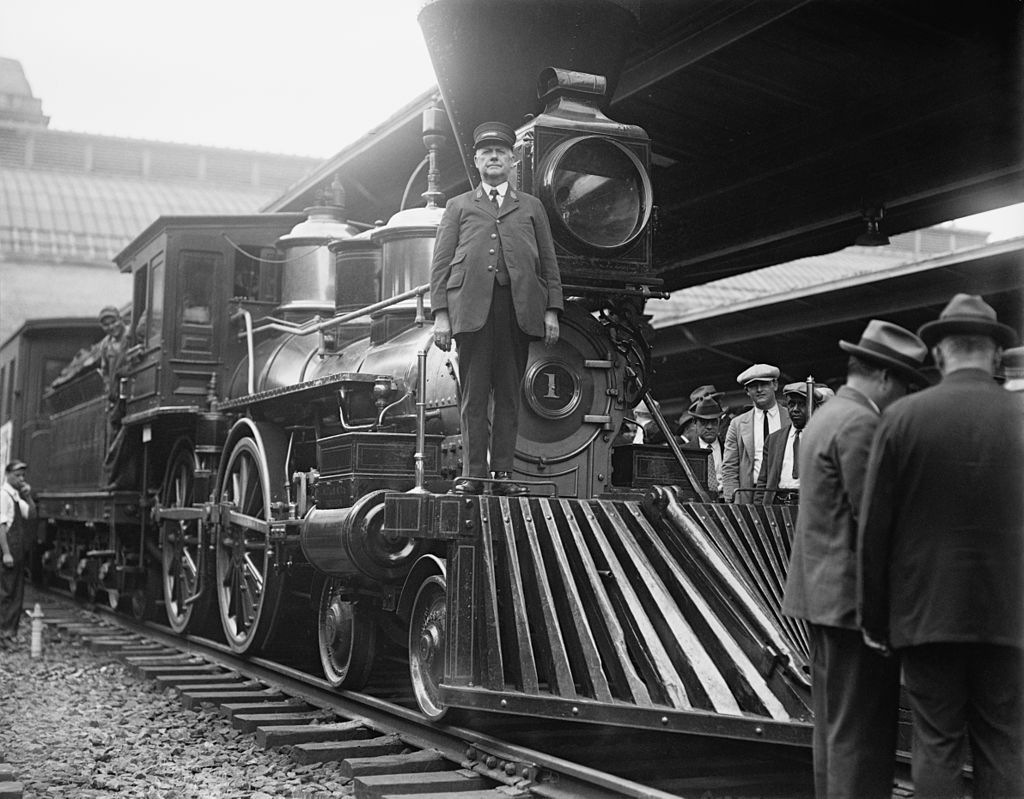
The William Crooks was named after a Colonel of the Minnesota Volunteers’ Sixth Regiment during the American Civil War (and later Chief Mechanical Engineer for the St. Paul and Pacific Railroad). It was the first locomotive to operate in the U.S. state of Minnesota.
When looking for 4-4-0 locos, I found this pic. I tried to find some info on this photo, but no luck. But what a great interesting shot with tons of western railroading captured.
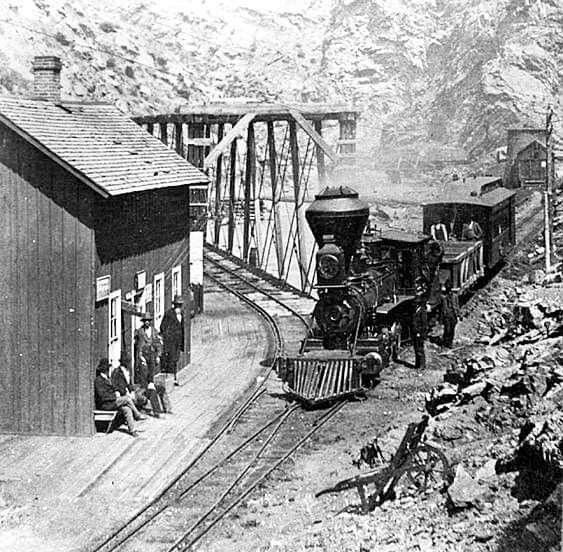
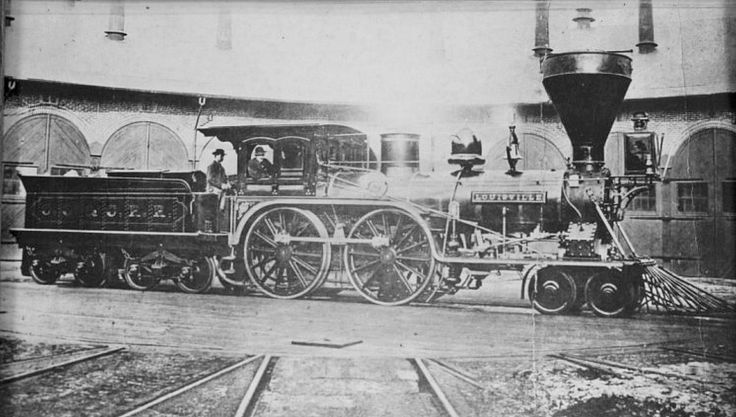
Similar to the previous, I couldn’t find much info on the “Louisville”. I studied this photo for quite a while. It has very large drivers – probably around 6’ diameter. And the pilot wheels are placed very close to each other. But what stumps me is I couldn’t find the cylinders! Notice how the side rods connect the two drivers, but there is no side rod visible that connects the drivers to a piston rod coming from a cylinder. There appears to be a valve box in the correct position below the smoke box. And, the valve box has what appears to be a steam line coming in the top (as typical). From what I can see, I’m guessing the valve gear is a Stephenson or similar. There is just no cylinder visibly attached to what I assume is the valve box (??). But, the cab roof is arched. Check out the large arched wooden doors to the roundhouse.
No direct info on the A.D. Lockwood. I can guess this is a Baldwin built loco because of the decorative upside-down triangle panel between the drivers. I know early Baldwins had these with “Baldwin Locomotive Works” written across the circular border of the circle inside the triangle. And, it has a cylinder below the valve box with a piston rod connected to the side rods and drivers! In this pic, it’s disconnected from its tender.
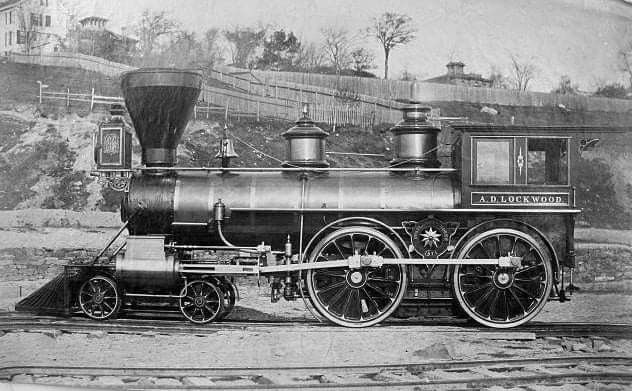
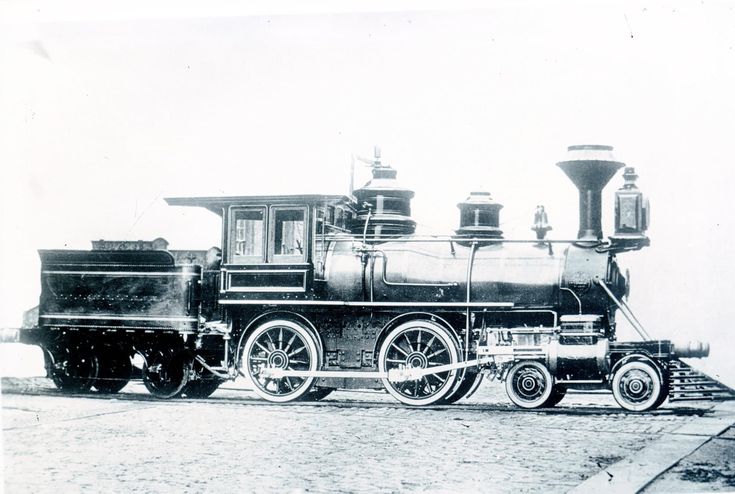
One more pic of an American with reasonably depicted valve gear (Stephenson). The valve box is very typical of Brooks or Rogers (or a number of other builders). It’s got a “shorty” two axle tender – like a bobber caboose.
I found this pic of “D. Cutler” of the Cutler & Savidge Lumber Company, #50, a small Class A Shay. Built in 1882, it only had (2) cylinders rather than the more typical (3) for Shays.
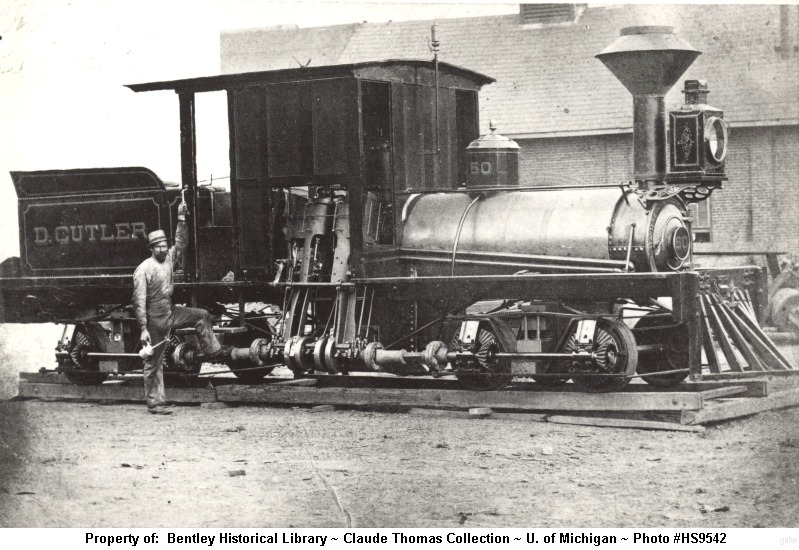
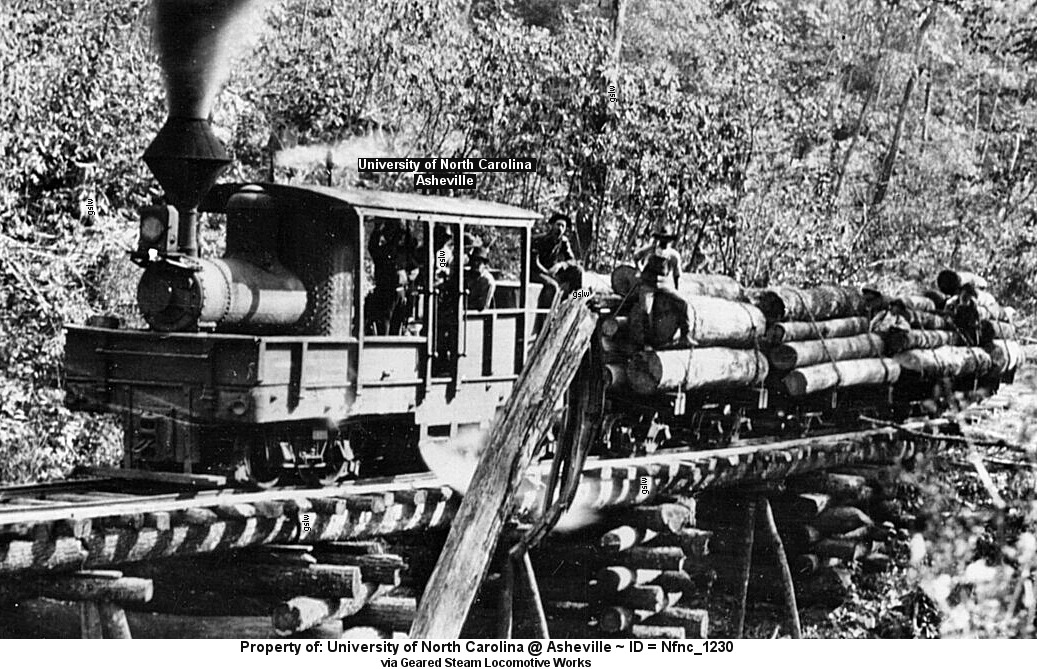
Since we visited geared locos, here’s Eberman Lumber Company’s Climax. It’s crossing MacKey Creek, McDowell Co., NC.
Baldwin built a Climax style geared locomotive. Marysville & Northern #2 was the first of (4) Climax styled geared locos that Baldwin built; built in 1913.
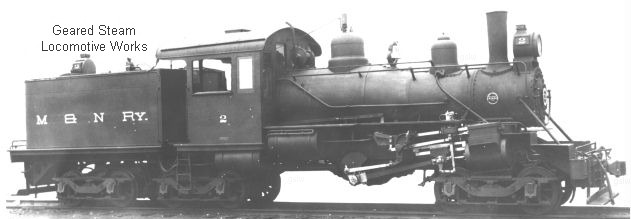
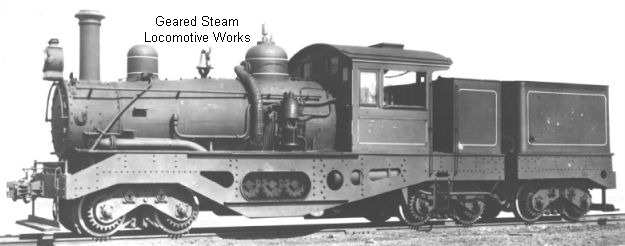
Baldwin also built a Shay styled geared steamer. This was Baldwin’s fifth and final geared loco, built in 1915. The pic is a builder’s photo; it’s not known whether this loco was ever sold.
When I saw this pic, I had to chuckle. It includes several interesting branch line features. Note the crew – a rather motley looking pair. The loco is a small 0-4-0T with a mostly open cab. The loco is traveling backwards pulling at least one small car. The car seems to be couple to the pilot of the loco with a long bar. It’s an open car with probably nothing more than a platform between the wheels that seats (3) VIP-looking gentlemen. The bridge/trestle is built rather crudely from large timbers wedged into the rocks. Sand and/or a small stream bed flows under the bridge. The stream looks dry, but during rainy seasons, with the mountainous surroundings, it probably swells to a level threatening the bridge.
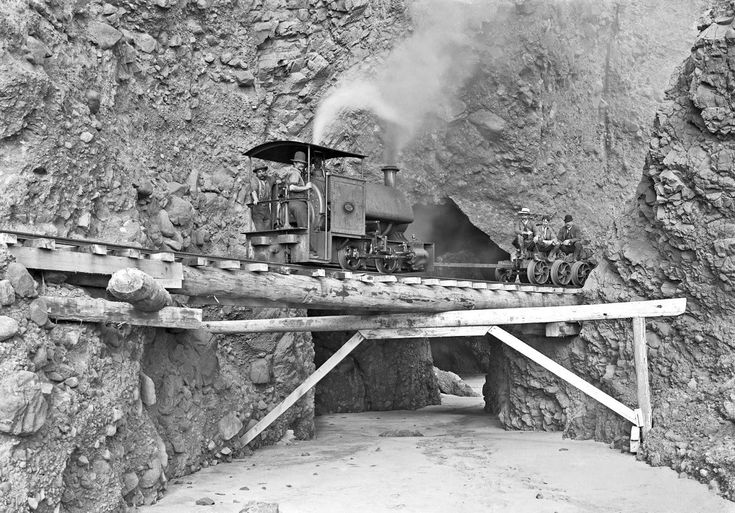
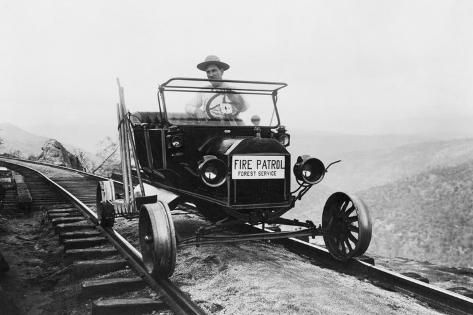
I’ve not seen a fire patrol vehicle like this before. I suppose having a small vehicle like this would allow part of the fire crew to zip down the line behind a train and check for any potential fire hazards left behind by the loco. My guess is that this was a west coast RR that traveled through forest maintained by the Forest Service.
This is one of the more interesting cars built by the Seattle Car Foundry. The tank car was built for the Yosemite Lumber Company for use on a 7,800′ incline with grades up to 78%! The expansion dome had to be placed at the uphill end of the car to avoid spillage, and special flanges between the tank and the frame kept the tank from slipping out of the hold-down bands. Drawings and photos of this car may be found in the May/June 2004 issue of Narrow Gauge & Short Line Gazette.
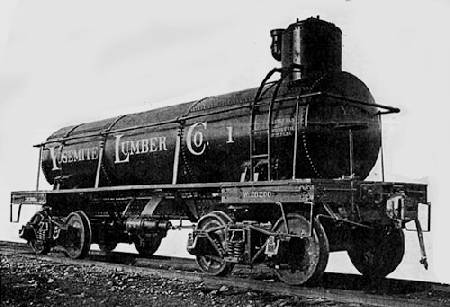
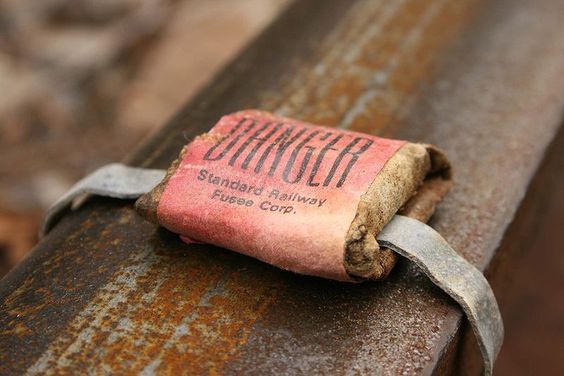
Since I’m drifting through a few topics, here’s a pic of a fusee clipped to the rail. If a train was stopped or delayed, a member of the crew would walk back and clip the fusee to the track to warn any approaching trains. The fusee was a large version of those caps we used to have as kids for cap guns. When the wheels of an approaching train crushed the fusee, it would let off a loud bang – hence warn the crew that something was awry ahead.
Around the turn of the century (1900, not 2000), the CNor had a few bobber cabooses. So, maybe a little scratchbuilt project is in store to build something like the Grasse River RR Caboose #71 Pic taken at Conifer, NY. 1938.
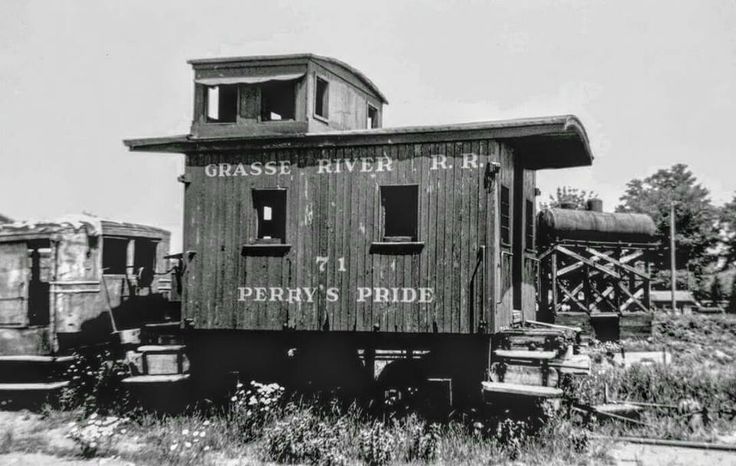
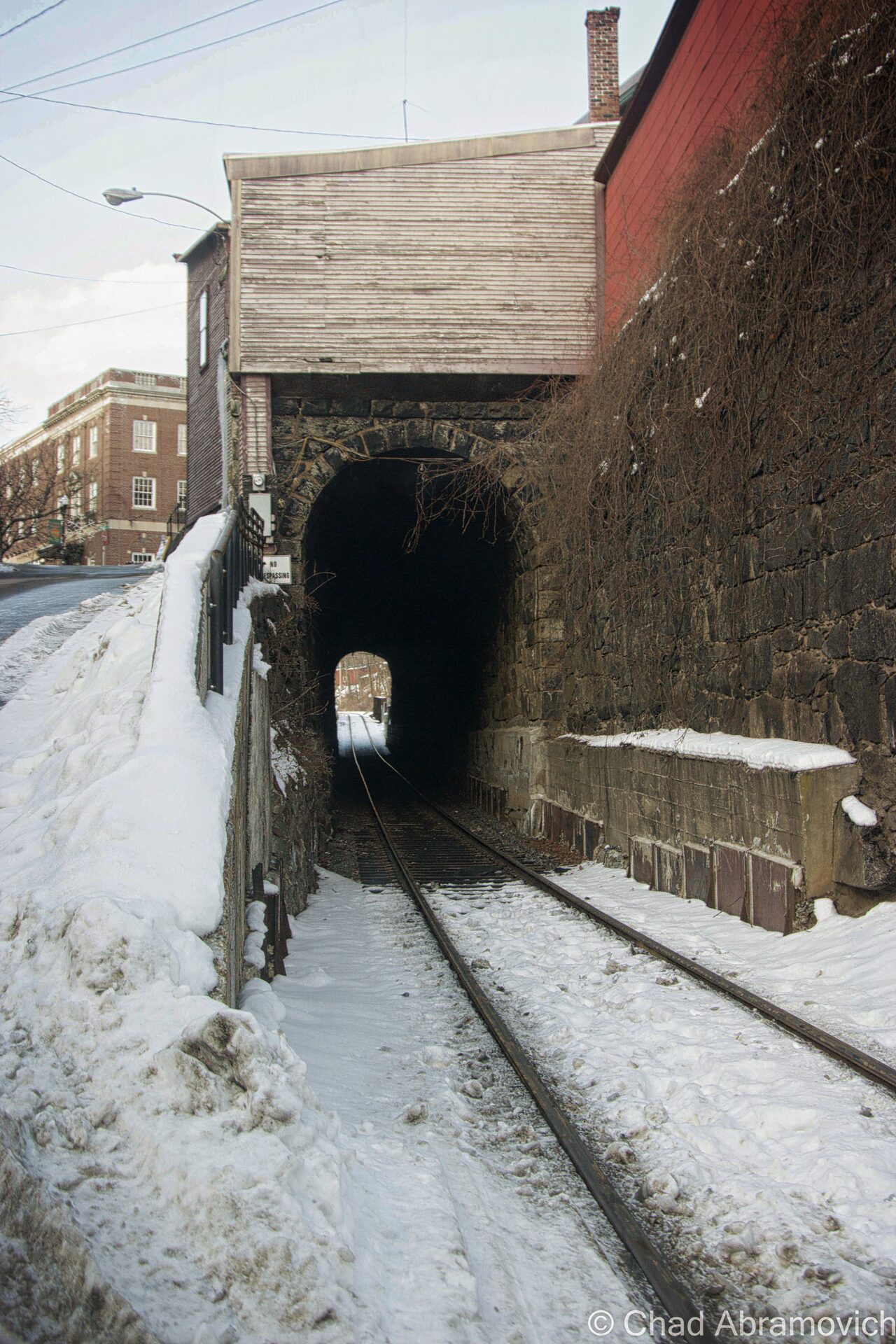
Again, off topic, I saw this pic – What a great possibility for a switching spur traveling through a populated industrial area!
Grand Trunk #49 is a Forney steamer that serviced the Grand Trunk Montreal commuter line. #49 is being lifted in the Pointe St. Charles erecting shop. The last steam locomotive was outshopped August 23, 1957. Canadian National Railways.
